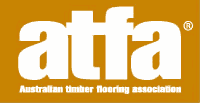Benefits of having Timber Floors
There are several benefits of having Timber Floors:
- Healthy. Timber is natural, hard wearing and when maintained and kept clean it avoids carrying dust and allergens which promote asthma and other respiratory problems.
- Ecological. Timber Floors are ecologically friendly. Since it is a natural resource, timber is both renewable and recyclable. Timber Floors have an environmental impact which creates 5 times less carbon emissions than ceramic tiles (source: CRC for Greenhouse Accounting).
- Durable. Timber floors are believed to be the most durable and low maintenance floor covering of nowadays.
- Variety. There are a lot of styles, colours and species of timber flooring available than ever before. You can find the colour and style of timber floor to fit your interior.
- Affordable. With the correct coating for your circumstances and regular cleaning your timber floor finish may last for up to 8 years before you need to consider recoating. The cost of recoating a timber floor is far more affordable than replacing carpet which begins to look worn, in many cases after 5 or so years.
- Easy to maintain. Maintenance of today's timber floors is easy. New technology in stains and finishes that takes little more than sweeping and with occasional use of a professional timber floor cleaning product.
- Flexible. Hardwood timber floors will always look good both in contemporary and traditional interior design.


